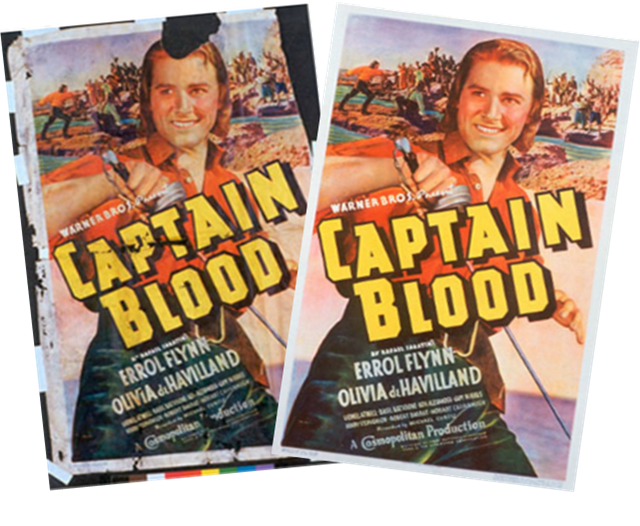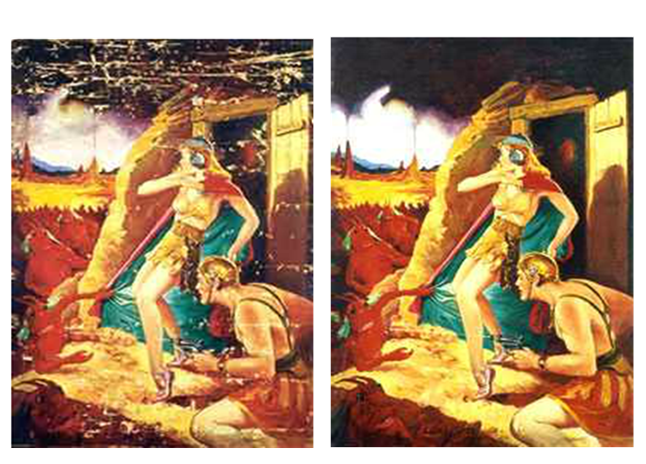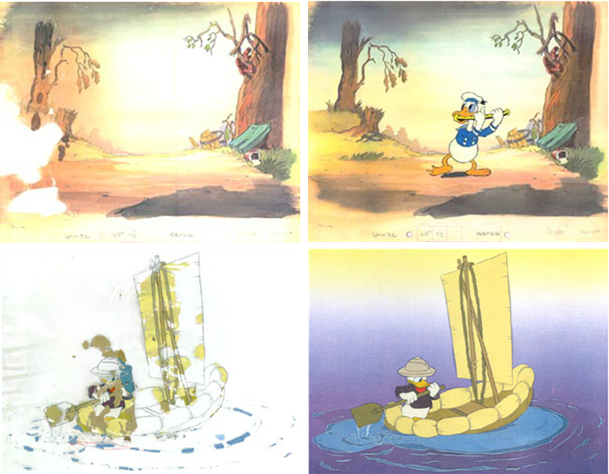Studio C is dedicated to the conservation and preservation of fine art and collectible items.
Proper and precise restoration is the result of dedicated work by experienced and knowledgeable artists and craftsmen.
The Studio C staff consists of talented artists and craftsmen who can restore the most challenging and demanding projects. Your valued pieces will be in the hands of the most professional conservation studio staff working today.
Our professional staff provides over 25 services all designed to preserve and restore paper, posters, fine art, ceramics, photos, animation cels, paintings and all collectible items.
Vista, California provides the perfect Mediterranean type climate, ideal for working on paper, fabrics and other delicate materials. Clean air, ample natural light, a consistent mild temperature and a low average relative humidity of 40% are all critical to the process.
We employ the most modern and natural methods in all of our preservation and renovation work. In fact, all of our work is done to meet the high standards of museums. The professionals at Studio C are ready to put their talents to work to enhance the life and value of your prized collectibles.
Try and visualize the day a famous movie poster or animation cel was produced. That's what we do here at Studio C: preserve and restore historic and collectible artwork to its original form.
Collectors from around the world come to Studio C when they need work done because we are fast and professional!


At Studio C we perform restoration and preservation on a wide variety of Fine Art and Collectibles.
Other work not shown here includes collectible comic books, toys and toy boxes. Basically, we can preserve or restore almost anything.
Preserving history is a monumental task, and one of the best ways is through the documents of the time. Presidents issued decries; Soldiers wrote letters from the battlefields in the Civil War.
Collectors have discovered this unique way of being a part of history, whether its an old family document or a collectible piece from a famous President!
At Studio C, we do our part by repairing damaged paper and preserving documents to museum standards. Put your collectible or family heirloom in the hands of professionals, contact us today!


Animation Cels where originally produced as scenes in cartoons. A lost art that has been replaced today by computers.
At Studio C we preserve animation history by repairing damaged Cels and preserving others. Few other places in America have the technology to work on these artifacts of popular culture!
Frequently Asked Questions about Restoration and Conservation.
The primary reason for conserving posters is to neutralize the acidity of the paper. All posters printed between 1900 and 1965 contain large amounts of acid embedded in the fiber of the paper. This is the result of paper mills using large amounts of acid to make wood pulp (a Bi-product of the timber industry) usable as an inexpensive source of fiber. The acid remains dormant in the fiber but can be readily activated by heat, bright light, moisture, dryness and other factors. The result is a "burning" and decomposition of the fiber. The paper becomes yellow then brown. It also becomes very brittle and splits easily. The acid problem is a time "bomb" waiting to ruin posters if they are not conserved.
The terms preservation, conservation and restoration are used interchangeably these days, however they mean quite different things. Following are more defined explanations of the way we use terms at Studio C. Preservation refers to preventative work done to posters. Generally, posters that can be preserved are in good to excellent condition and to maintain them that way it is best to preserve them. Treatments include deacidifrication, starching etc. Restoration refers to corrective work done to posters to stop further deterioration and return them to as close as possible to their original condition. Conservation refers to the overall general process of "fixing" items. It is a name given to the industry as a whole and used when describing a completed item.
A poster properly restored can command its full value and more. Since the poster has been stabilized it will last indefinitely. The paper will not yellow and colors will not fade. The linen backing will keep it from tearing and ripping.
To check for restoration the best way is to hold the poster at an angle. This will show which parts have been worked on. Also, holding the poster up with a very bright light behind it shows what areas have been repaired. If you are not sure, it is always wise to bring in a professional to advise you on any important purchase.
Yes. Any type of bad restoration can generally be reversed. Posters can be unmounted, re-washed and remounted. Bad inpainting can be removed and replaced with professional work. It is better to undo all the bad work and start over from scratch than to cover-up bad work.
Commercial restoration is the type of work requested by most people because it's fast and less expensive. Basically it is a "cosmetic" approach to fixing what ever problems the poster might have. Archival Restoration is recommended when one wants the best for their poster. The work is all done by hand. But most importantly all the work is perfomed from start to finish by hand and only by seasoned professionals.
The best way to store posters is flat. With glassine paper in-between them. Preferably in an acid-free box. Larger posters should be stored in acid free tubes with as large a roll as possible. A cool, dry place is also important.
Movie posters look best in simple gallery style frames. But it is very important to use UV-plex. This type of plastic keeps the posters from fading. Also all materials should be acid free to keep the poster from "burning" or staining. Posters should also be put away and rotated to make sure they are not being overexposed to light, heat or humidity.
Yes, most every problem can be taken care of with restoration. Even items that appear hopeless can be resurrected and made to look terrific. The question becomes how much restoration is too much and at what point is the cost prohibitive. Many pieces are rescued by people who have special attachments to a particular film or actor. Also many historical pieces are rescued because of their significance or because of the beauty of the graphics.
Movie posters look best in simple gallery style frames. But it is very important to use UV-plex. This type of plastic keeps the posters from fading. Also all materials should be acid free to keep the poster from "burning" or staining. Posters should also be put away and rotated to make sure they are not being overexposed to light, heat or humidity.
Reconstruction is the name given to pieces or parts of posters that need to be "recreated". These parts have either been lost or damaged beyond use. It takes extensive knowledge and ability to be able to execute these faithfully and convincingly. Since large posters where printed in sections.
Please feel free to contact us at any time. We are most happy to answer any questions, discuss your project and provide you with references.
3231-C Business Park Dr. #222, Vista, CA 92081
Phone: 760-822-3956
Phone: 760-908-9171